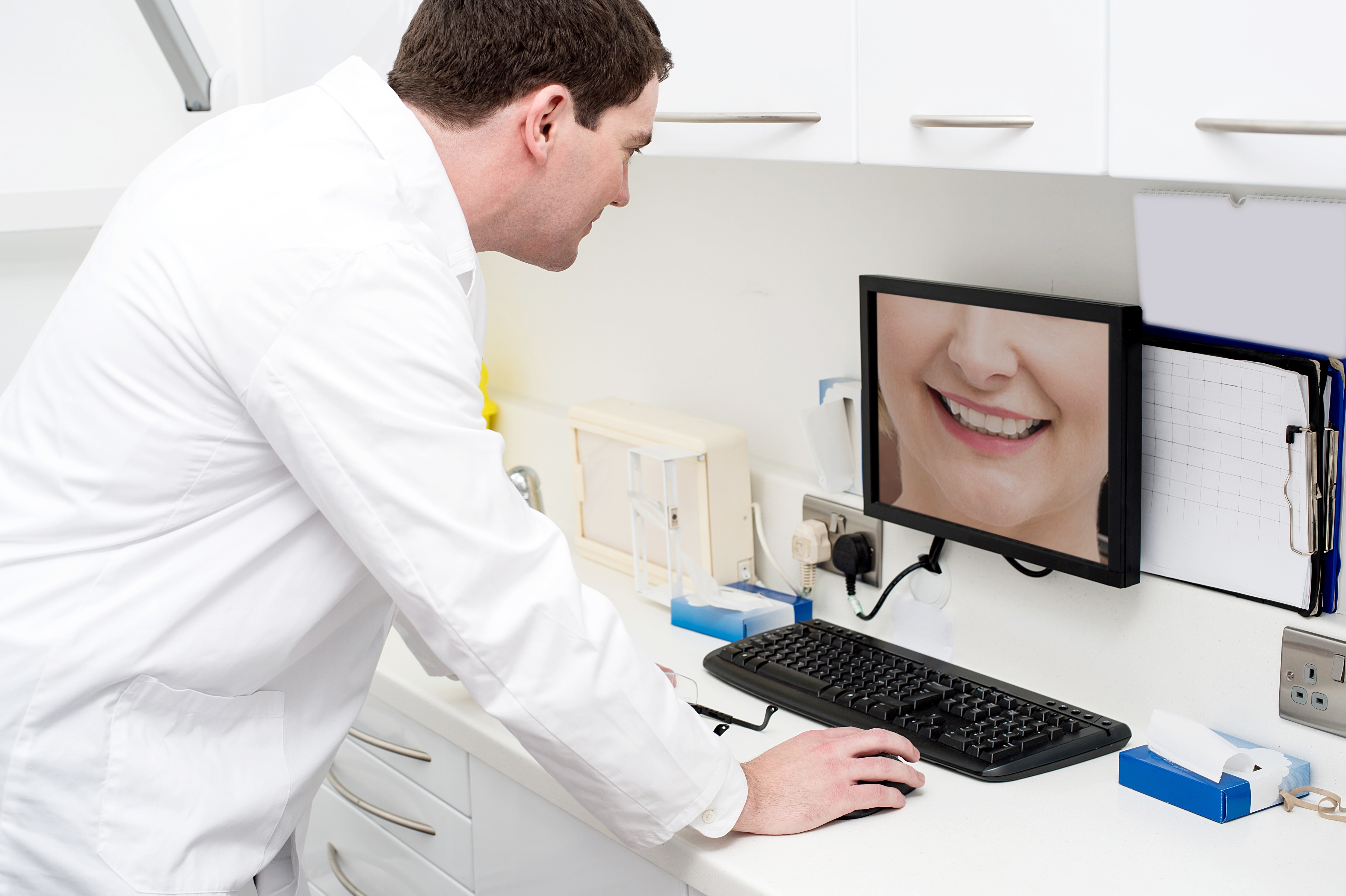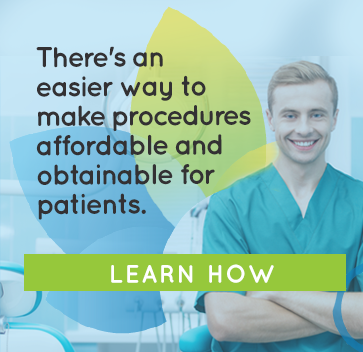By Compassionate Finance on Sep 26, 2018 10:14:00 AM
Almost 20 years ago, a group of medical professionals made an intriguing proposal to the Department of Defense: Why not bring quality dental care to the army using telecommunications? They called the idea “Total Dental Access.” That idea is now officially a revenue stream with the publication of billing codes by the ADA. As technology advances and more people have access to affordable dental financing, teledentistry is definitely an area that practicing dentists need to examine and consider.
WHAT IS TELEDENTISTRY?
Teledentistry is a term that covers a variety of services performed by dentists and dental assistants. It involves the use of videos, photographs, conferencing and dental record review using Internet technology. In other words, dentists make professional recommendations to patients using the Internet. They can superficially examine teeth, order laboratory reports, evaluate those reports and send prescriptions to patients who are not physically in their clinics.
Or, as described in this excerpt from the A.D.A. Guide of Understanding and Documenting Teledental Events:
Synchronous teledentistry (D9995)
Is delivery of patient care and education where there is live, two-way interaction between a person or persons ( e.g., patient; dental, medical or health caregiver) at one physical location, and an overseeing supervising or consulting dentist or dental provider at another location. The communication is real-time and continuous between all participants who are working together as a group. Use of audiovisual telecommunications technology means that all involved persons are able to see what is happening and talk about it in a natural manner.
Asynchronous teledentistry (D9996) is different as there is no real-time, live, continuous interaction with anyone who is not at the same physical location as the patient. Also known as store-and-forward, asynchronous teledentistry involves transmission of recorded health information (e.g., radiographs, photographs, video, digital impressions and photomicrographs of patients) through a secure electronic communications system to another practitioner for use at a later time.
To a practicing dentist, this refers to examining a video or photograph or dental records with the patient and usually another dental practitioner via teleconferencing technology. This form of “exam” is commonplace in medicine today, especially in rural locations. In dentistry, this form of exam or professional consultation can be used—an IS being used in situations where uniting patient with dentist is either impossible or complicated. This includes people in remote areas, seniors in nursing homes and school students.
BUT IF YOU’RE NOT THERE, HOW CAN THIS BE QUALITY DENTAL TREATMENT?
Teledentistry can and does work when the technology unites a team to solve a dental issue. And it does work. Perhaps the most extensive study concluded in California in 2016.
The summary published by Science News states: “Bringing "virtual dental homes" to schools, nursing homes and long-term care facilities can keep people healthy -- reducing school absenteeism, lessening the need for parents to leave work to care for an ailing child, and helping to prevent suffering for millions of people who have no access to a dentist, a six-year study by University of the Pacific demonstrates.”
Director Dr. Glassman, a professor of dentistry at University of the Pacific oversaw the treatment of over 3,000 patients over a six-year period. He called teledentistry system “virtual dental homes.” These virtual dental clinics were taken to preschools, elementary schools, residential seniors facilities and to the disabled. In most cases, a dental hygienist was on hand to facilitate the process, as well as perform teeth-cleaning, take X-Rays and do minor treatments. Using tele-technology, the dentist would assess the patient’s dental needs and oversee the work done by the hygienist.
The project was such a success, a Californian Assembly member Evan Low (D-Silicon Valley) suggested bringing these “virtual dental homes” a reality in even more schools. And the same model used to provide care in the California study can easily be replicated in nursing care facilities and small hospital settings.
REMOTE COMMUNITIES GET EXPERT SERVICES
Of course, one of the main uses of teledentistry is to deliver necessary dental care to those living in remote areas—or, as they are called officially—the undeserved. A significant number of people live outside of urban areas, making it hard to travel to professionals to get the medical or dental services that they need. For many, even regular check-ups require days of travel and considerable expense. Teledentistry can help.
With minimal technological investment, a dental professional can deliver his or her specialized knowledge to treaty reserves, to people in small mountain towns or even to the Antarctic. Remember the doctor who performed breast cancer surgery on herself while stationed as a doctor at an Antarctica station? The same telecommunication that helped her save her life are the same technologies that can help patients in faraway places get the dental treatment that they need.
AND THE OFFICIAL POLICY…
As laid down in policy guidelines presented by the AMA in 2015, dentists involved in teledentistry must still conform to state regulations. There is a twist. The dental professionals must be licensed and credentialed in both the state he or she is practicing in AND the state where the patient is being treated.
To quote Dr. Terry O’Toole, vice president of the ADA Council on Dental Practice: “The policy states that if any allied dental personnel are participating in teledentistry, their supervision should conform to the dental practice act in the state where the patient is receiving services and where the dentist is licensed. Dentists and allied dental personnel must also be licensed or credentialed in accordance with the laws of the state in which the patient receives care, according to the resolution.”
And as far as insurance payments go, both public and private third-party payers the official policy states that they: “…should cover services provided through teledentistry at the same level as if the services were delivered in a traditional in-person encounter.”
The AMA guidelines also suggest that teledentistry is a field that is going to become more common as dental technology and specialized dental treatment expands.
DO-IT-YOURSELF DENTAL PROCEDURES?
Yes, they do exist, thanks to teledentistry. Probably the most obvious example is an orthodontic clinic that allows patients to straighten their teeth under the supervision of trained professionals while in the comfort of their homes. As long as a patient has seen a dentist in the last six months, the clinic can review records, have imprints taken, send supplies and follow the patient’s progress—all done remotely.
And this is just the start. Robots are performing dental surgery in China. 3D printers can construct crowns. And the ADA has pricing codes that allow dentists to request payment for remote services rendered.
What makes all of this almost surreal dental treatment feasible is qualified, trained and imaginative dentists.
WHERE DO YOU FIT IN?
That depends on you. What is your specialty? Have you had problems with getting seniors and patients in the country to come in for regular exams? Maybe you need to consider how to take the services of a trained professional to THEM.
Maybe your special services can be used to consult in a remote northern community? First, make sure that your patients are covered; a patient with COMPASSIONATE FINANCE as their financial provider can get those check-ups, have that tooth examined and even send in samples for analysis to determine if more follow-up is necessary—all without negotiating back-roads or hotel rooms or lining up a nurse to accompany them on a long drive.
We invite you to review the sources below and pull out a map of your area. The dental treatment and procedures you provide and go a long way and help a lot more people—with teledentistry.
***
SOURCES:
https://www.ncbi.nlm.nih.gov/pubmed/10566495
--Rocca MA, Kudryk VL, Pajak JC, Morris T. The Evolution of Teledentistry within the Department of Defense. 1999.
https://www.sciencedaily.com/releases/2016/08/160802151321.htm
http://www.straightteethdirect.com/teledentistry-101/
https://www.nytimes.com/2009/06/25/us/25nielsen.html
http://www.straightteethdirect.com/teledentistry-101/






comments